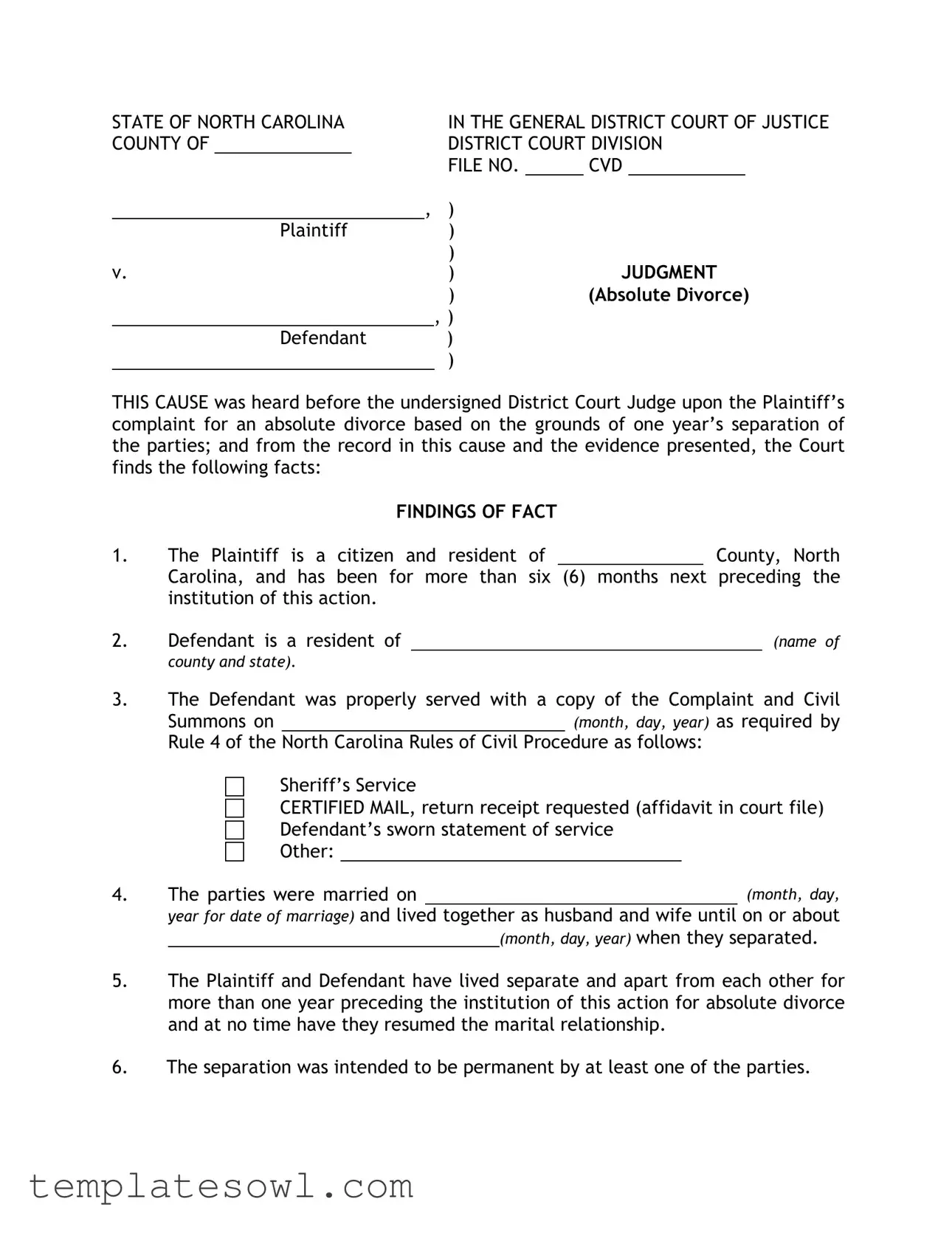Filing for an absolute divorce in North Carolina is a significant step, and the associated paperwork, particularly the Judgment Absolute Divorce form, demands careful attention. One common mistake arises from failing to provide accurate dates. When filling out the form, people often enter incorrect or vague dates for separation, marriage, or the service of documents. Each of these dates is crucial in establishing the timeline of events surrounding the divorce.
Another frequent error is neglecting to verify that all parties were properly served with the divorce papers. Certification of service is a key element. Omitting this information or providing inadequate proof can jeopardize the proceedings, leading to delays or even dismissal of the case.
Many individuals overlook the specifics regarding children born during the marriage. It is important to clearly state whether children exist and provide complete information about each child, such as their full names and dates of birth. Leaving this section blank or adding incomplete details can complicate the process, particularly if custody or support issues arise later.
Additionally, some individuals forget to indicate whether they wish to resume their maiden or former name. This section should not be skipped, as it legally impacts one's identity after the divorce. Without this line filled out, the court may not be aware of the individual’s intent, leading to unintentionally retaining the married name.
Furthermore, inaccuracies or vagueness in the statement of residency can pose a problem. The form asks for both the Plaintiff's and Defendant's residency details. Parties must ensure that the names of counties and states are correct. Inaccuracies here can lead to jurisdictional disputes that ultimately stall the divorce process.
Another error to avoid is neglecting to check all required boxes in sections asking for specific details about the marriage, separation, and children. Incomplete information can create confusion or necessitate further clarifications, causing delays in obtaining the divorce.
Many individuals mistakenly file the form without reviewing it for clarity and conciseness. Any ambiguities can lead to misunderstandings or question the validity of the claims made within the document. A straightforward and clear presentation ensures that the judge can effortlessly follow the facts laid out.
Moreover, some individuals forget to sign and date the document. The signature serves as a crucial confirmation that all included information is accurate to the best of their knowledge. Without this, the form cannot proceed through the court system, effectively stalling the entire process.
Finally, failing to follow up after submitting the form can be detrimental. It is important to confirm with the court that the divorce was processed and that no additional information is required. Ignoring this crucial step may lead to unintended complications or misconceptions regarding the status of the divorce.



